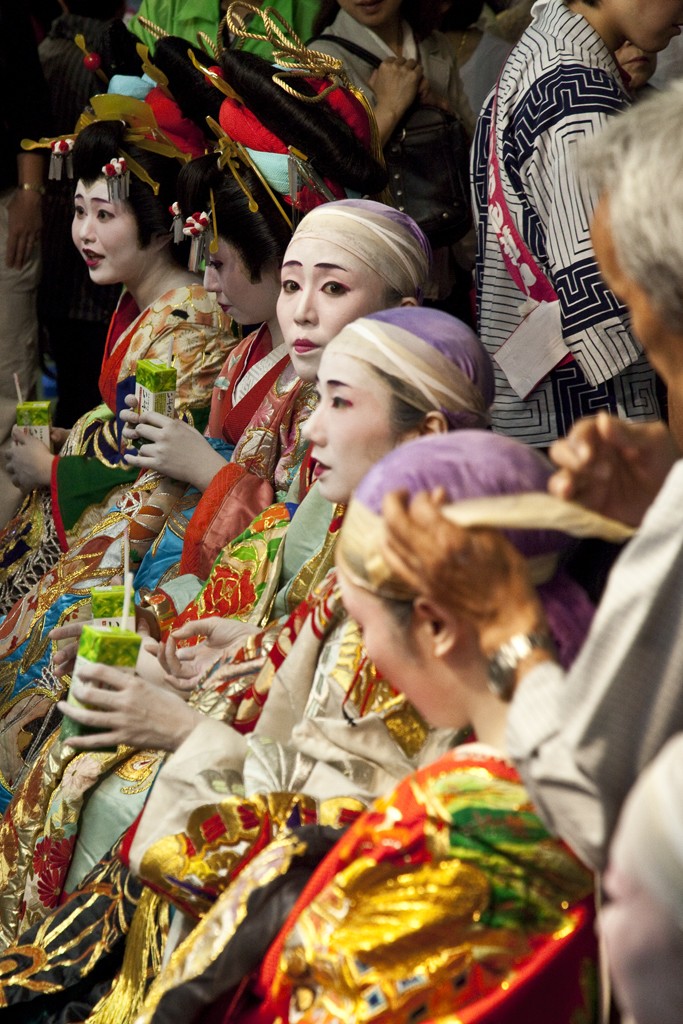Embarrassing confession: until a few years ago, I thought a “courtesan” was a female courtier. Just on the off-chance that you’re confused like I was, a courtesan is a prostitute. The oiran were, like geisha, more than just prostitutes, though, and were renowned for their music, dancing, poetry, and calligraphy. They were farther toward the coital end of the sex-worker spectrum than geisha, and were the aristocracy of the pleasure quarters. There’s an interesting Wikipedia article about them at: http://en.wikipedia.org/wiki/Oiran
Oiran were fashion trend-setters. The high-ranking ones wore these huge shoes and had a style of walking where they dragged their feet out sideways in a semi-circle. You can see it in this video: http://www.youtube.com/watch?v=yNncpdEFOB0&feature=related. The shoes weigh 2.5 kgs.
The procession is held in Shinagawa and takes place every year on the first Saturday in June, and is part of a larger mikoshi festival. The procession starts at 6:30, not from the Shinagawa Bridge (as the Japan Times Festival Listings said, causing me to wait in the wrong place) but up the road farther toward Shinagawa Station. If you come to the bridge, keep going, cross the big road and turn left. I believe it’s here.









The first photo is particularly captivating; I like the third one especially.
While on some level it’s certainly quite bizarre – this being an element of the low culture of the Edo period, and a glorification of, of all things, the sex trade – given the refined, elegant, and bold fashions of that corner of historical culture, it is on the other hand, in a different way, great that these fashions and parades can still be seen.
I always enjoy your posts with beautiful pictures. This one is so special and truly amazing- almost taking me to the edo period I knew nothing of.
The makeup and outfits are amazing.
Hi Ed,
Just noticed that you have been kind enough to post a link to my photos. Thank you very much for that.
Stunning girl, especially makeup.